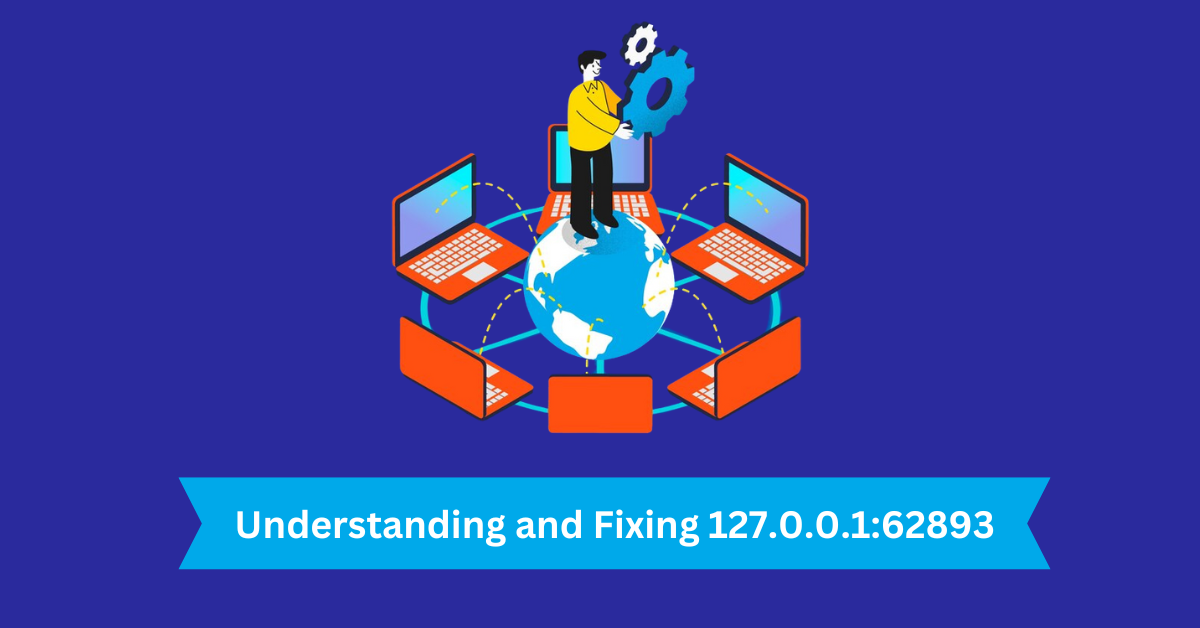Have you ever encountered the cryptic code of 127.0.0.1:62893 while working on a project? You’re not alone! This error message often pops up during the development process, leaving many scratching their heads in confusion. At its core, this address consists of two parts: the special IP address known as localhost (127.0.0.1) and a port number (62893). Think of ports like doorways that allow different applications to send and receive data seamlessly.
When your application tries to communicate with another process, it specifies localhost as its destination using 127.0.0.1, indicating it wants to interact with something on the same machine via port number 62893—where all the action happens! However, when things go awry and you see “Disconnected from the target VM” or similar messages, panic can set in quickly.
Fear not! In this guide, we will delve into common causes for these frustrating errors and explore effective solutions so you can get back to smooth sailing in your coding endeavors without missing a beat.
Common Causes of the Error
The error message associated with 127.0.0.1:62893 often stems from several common issues during the development process. One primary cause is misconfigured settings in your applications or tools, leading to a failure in establishing connections.
Another factor could be network interruptions, which prevent communication between processes on the same machine. This can occur due to firewall restrictions that mistakenly block legitimate traffic meant for port number 62893.
Malware or viruses might also play a role by interfering with normal operations and corrupting essential files necessary for proper functioning. Additionally, outdated drivers can hinder connectivity between various components of your system.
Understanding these causes helps pinpoint the source of the problem more effectively and paves the way for targeted troubleshooting measures tailored to resolve it efficiently.
Solution 1: Checking for Malware or Viruses
When grappling with the error message linked to 127.0.0.1:62893, it’s crucial to consider potential malware or viruses lurking on your system. These malicious entities can disrupt communication processes and cause connectivity issues.
Start by running a comprehensive antivirus scan. Many programs offer quick scans, but a full sweep is essential for identifying hidden threats that may impact your development environment.
Once the scan is complete, review any flagged items carefully. It’s not uncommon for legitimate files to be mistakenly labeled as harmful, so ensure you don’t inadvertently remove something crucial.
If malware is detected, take immediate action to quarantine or delete those files. Afterward, restart your computer to ensure that all changes take effect and monitor if the error reappears during your coding tasks or application testing phases.
Solution 2: Resetting Network Settings
Resetting your network settings can be a game-changer when dealing with the 127.0.0.1:62893 error message. This solution clears any misconfigurations that might be causing connectivity issues.
To initiate this process, navigate to your device’s settings. On Windows, head over to Network & Internet settings and look for “Network reset.” For macOS users, you’ll find similar options in System Preferences under Network.
Once you’ve initiated the reset, your computer will restart as it re-establishes default configurations. It’s important to note that this step removes all saved Wi-Fi networks and passwords, so have them handy before proceeding.
After resetting, check if the error disappears while trying to connect again. This simple yet effective solution often resolves underlying conflicts between applications vying for access through localhost on port 62893.
Solution 3: Updating Drivers and Software
Keeping your drivers and software up to date is crucial for smooth operation. Outdated drivers can lead to communication issues, often resulting in the error message associated with 127.0.0.1:62893.
Start by checking if your operating system has any pending updates. These updates often bring critical fixes that enhance functionality and security.
Next, look at your specific applications that may be using this port number. Developers frequently release patches to improve performance or address bugs.
Visit the manufacturer’s website for hardware components like graphics cards or network adapters. They usually have a support section where you can download the latest driver versions.
Utilizing automatic update tools can simplify this process further, ensuring you’re always equipped with the most recent enhancements without manual intervention. Regular maintenance of software not only resolves existing errors but also prevents future ones during application development or testing phases.
Solution 4: Disabling Firewall or Antivirus Programs
Sometimes, the error message involving 127.0.0.1:62893 arises due to overly protective firewall or antivirus settings. These security measures can mistakenly block legitimate applications from communicating over the designated port.
Start by temporarily disabling your firewall or antivirus software to see if it resolves the issue. If you notice that communication is restored, you’ve pinpointed a potential culprit.
However, don’t forget to re-enable your security tools afterward! Instead of leaving them off, consider adding exceptions for specific applications. This way, you maintain protection while allowing necessary data exchange through 127.0.0.1:62893.
Always ensure that any changes made do not compromise your device’s overall safety against real threats and vulnerabilities in today’s digital landscape.
Conclusion
Navigating the complexities of error messages like 127.0.0.1:62893 can be daunting, especially during critical development phases.
Understanding its origins and implications opens doors to effective troubleshooting strategies.
Whether it’s checking for malware or resetting network settings, each step plays a vital role in restoring functionality.
The significance of local addresses can’t be overstated; they serve as essential communication links between applications on your device.
With proper diagnostics and adjustments, issues that arise can often be resolved swiftly, allowing you to focus on what truly matters—your project’s success.
Engaging with these challenges ultimately enhances your skills and deepens your understanding of networking dynamics.
FAQS
What does the address 127.0.0.1 mean?
The IP address 127.0.0.1 is known as localhost, referring to your own device within a networking context.
Why do I encounter this error during development?
This error often pops up when applications on your device try to communicate with another process but cannot establish a connection due to misconfigurations or blocked ports.
Is it safe to expose port 62893 publicly?
Generally, exposing any port can lead to security vulnerabilities such as Denial of Service (DoS) attacks and unauthorized access, so caution is advised when deciding which ports are accessible externally.
How can I check if my service is running correctly?
You can verify if the specific service associated with port number 62893 is active by using network diagnostic tools or checking through your application settings.
What steps should I take if issues persist after trying various solutions?
If you’re still facing issues despite troubleshooting efforts, consider consulting application-specific documentation for configuration details or reaching out for support from relevant forums dedicated to software development and networking challenges.
For more better information please visit :Stackhut.com

